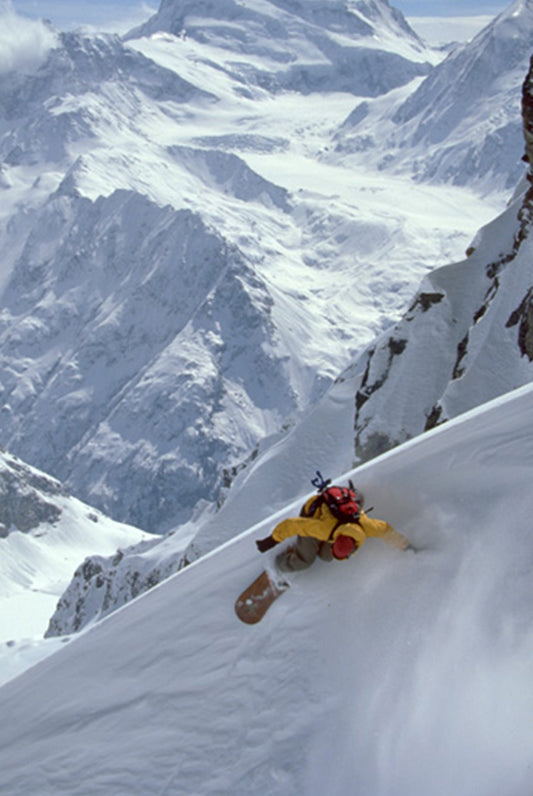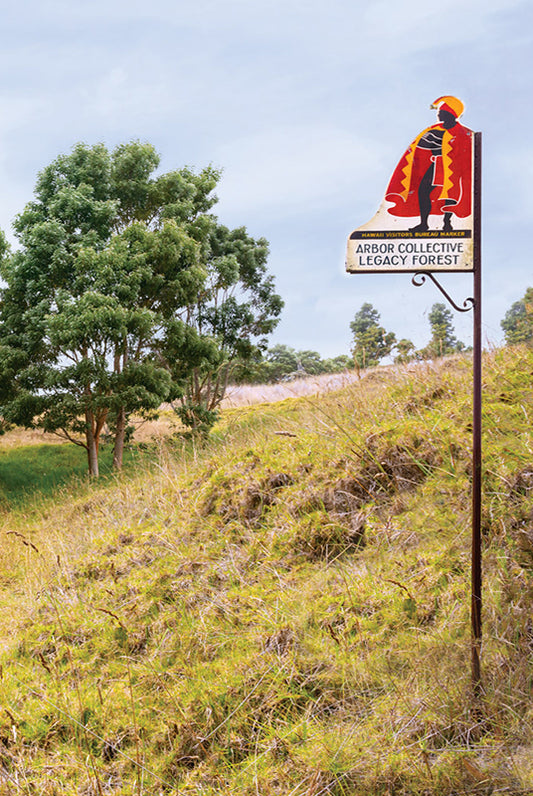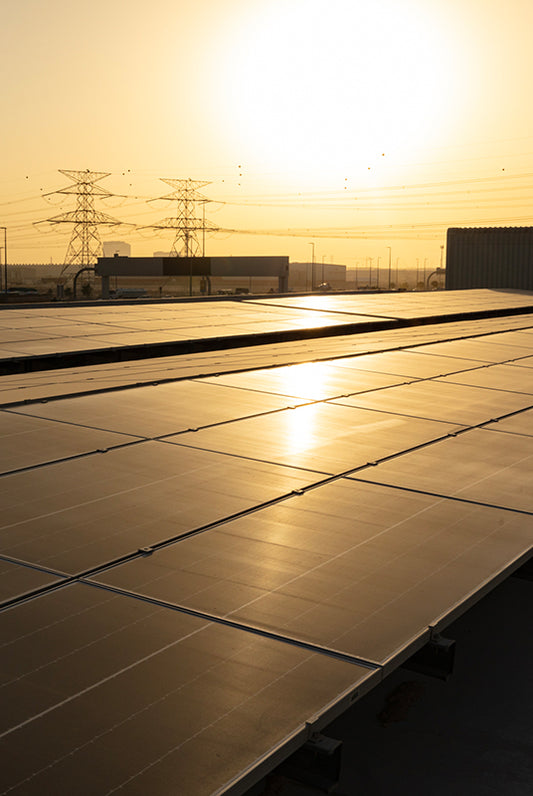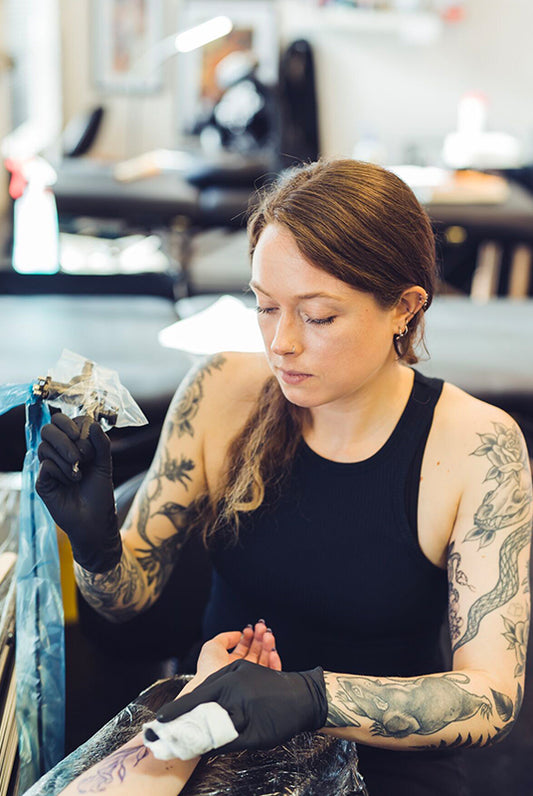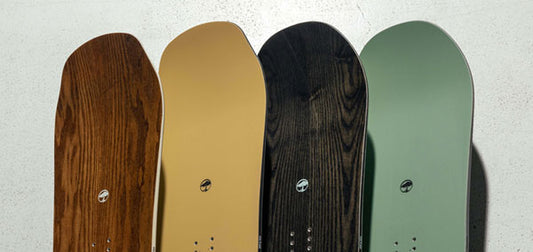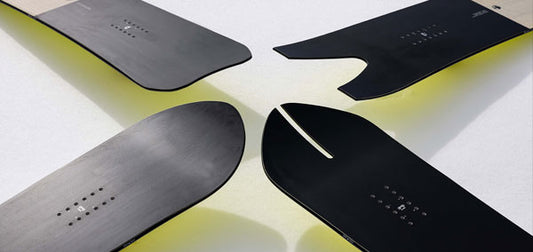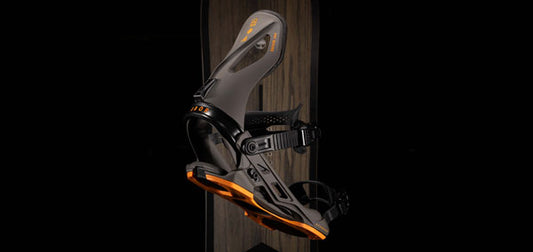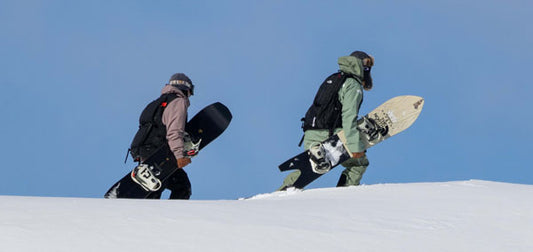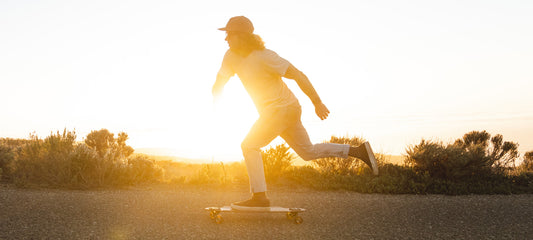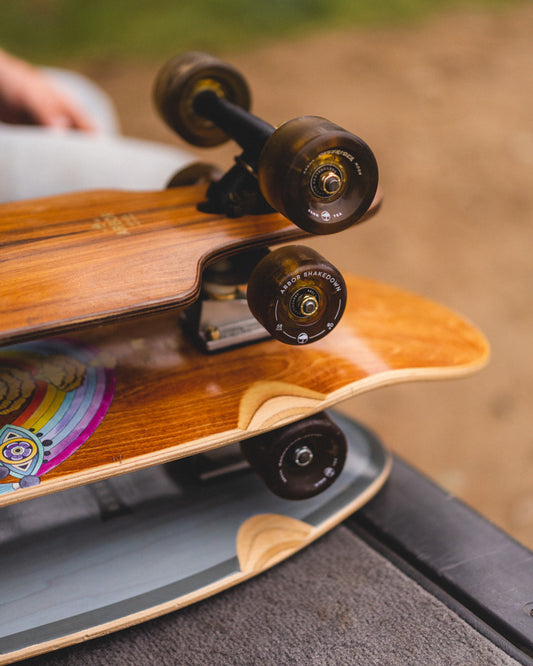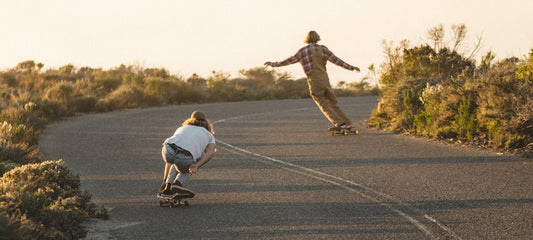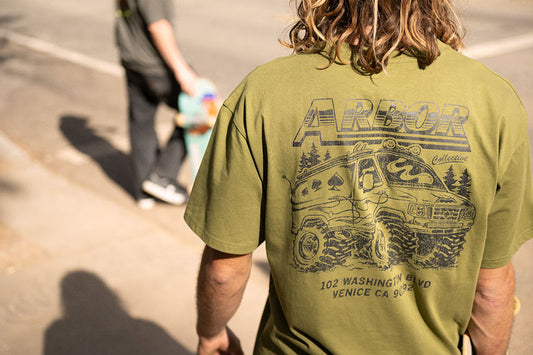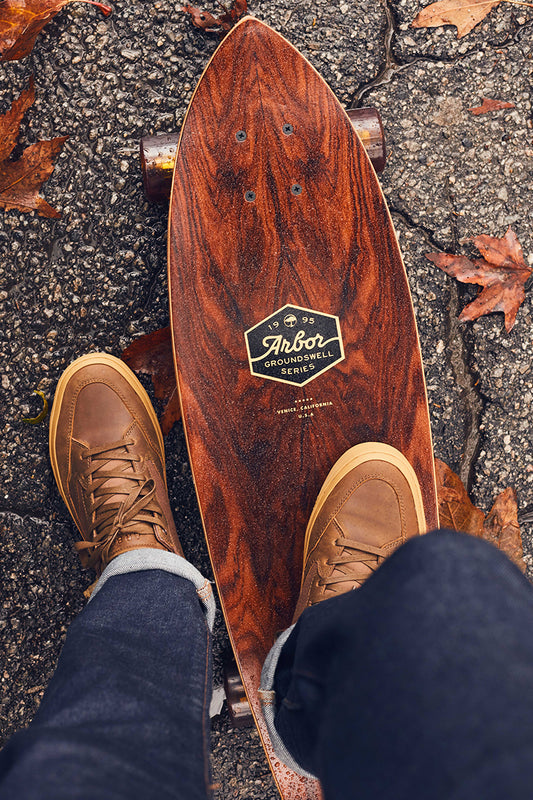Marie-France Roy brings a lifetime of riding experience to designing the brand new Veda. Since finding her passion in the snow of eastern Canada at 11 years old, MFR has peaked in every discipline of freestyle and freeride snowboarding. An illustrious career full of X Games appearances, jaw-dropping street and big mountain video performances, Marie has refined her riding style to that which feeds her drive for exploration and better understanding nature and all it has to offer.Her vetted riding ability, and knowledge of the terrain is elegantly translated in her design. Rooted in freestyle, built for experienced freeride and performance in all terrain, Arbor Snowboards introduces the Veda designed by Marie-France Roy.
BEHIND THE VEDA
with Marie-France Roy
FEATURING THE ART OF ALICIA GILMOUR
BEHIND THE VEDA
with Marie-France Roy
BEHIND THE VEDA
with Marie France-Roy
FEATURING ART BY ALICIA GILMOUR
Marie-France Roy brings a lifetime of riding experience to designing the brand new Veda. Since finding her passion in the snow of eastern Canada at 11 years old, MFR has peaked in every discipline of freestyle and freeride snowboarding. An illustrious career full of X Games appearances, jaw-dropping street and big mountain video performances, Marie has refined her riding style to that which feeds her drive for exploration and better understanding nature and all it has to offer.Her vetted riding ability, and knowledge of the terrain is elegantly translated in her design. Rooted in freestyle, built for experienced freeride and performance in all terrain, Arbor Snowboards introduces the Veda designed by Marie-France Roy.
IN THEIR OWN WORDS
"A few years ago, one of my best friends, Alicia Gilmour, suffered from a serious skateboarding incident which resulted in a life changing Traumatic Brain Injury. I felt helpless and I wasn’t sure what to do but I just tried my best to be there for her. As she was slowly healing and started making her art, I thought that having it featured on the Veda could be a nice gesture to uplift her spirit through the hard times."
- MARIE-FRANCE ROY
"That was the most challenging and transformational time of my life. At times I didn't know if I was going to make it out the other side. I do not want my story to come across like it was easy and I found art, and now my life is better than it was before. This was a journey through absolute darkness and it took being my own advocate, the people stood by me, and a desire to live again that got me through. What I want to tell people is that there is help and you can overcome this.
With this film, I hope we can reach someone who is in their darkest time, and tell them they are not alone, and to keep going. Because I'm telling you from experience, that even though you can't see it right now, what is on the other side of that darkness, could be something greater than you ever imagined for your life.”
- ALICIA GILMOUR
VEDA - DESIGNED WITH MARIE-FRANCE ROY
ART BY ALICIA GILMOUR
If we take care of each other and ourselves, we have a chance of making it through the darkest times in our lives and building something positive from the experience. This is Alicia Gilmour and Marie-France Roy sharing their experience.
PRODUCED BY HUMAN
A marketing/branding/production company dedicated to creating content with the intention of helping reduce suffering.
COMPOSED AND ORIGINAL SOUND DESIGN BY TALON PICKETT
Interview with Veda Artist
Alicia Gilmour
BY MARIE-FRANCE ROY
A few years ago, you had a gnarly head injury. Are you willing to share your experience?
Absolutely, this was the day my life changed forever, and was the beginning of the most challenging and transformational journey of my life.
I was on a road trip with my boyfriend at the time and two of our best friends. It was a dream trip, skateboarding and surfing down the west coast. We stopped at Lincoln City skatepark, I’ve seen it in videos for so many years, I was so excited to skate it. There was a big bowl up at the top of the park which is my favourite thing to skate. And I’m not new to skating, I’m lucky I got into it when I was 10 or 11 years old, I love skating transition. Anyway, it was no thing for me to roll up there and drop into the deep end, I’d done it 1000 times before. But that day there was a tiny pinecone in the flat bottom. I dropped in, so stoked and lined up to hit this little hip, and I don’t remember what actually happened but I guess my board stopped dead and I pretty much super maned head first into the other concrete transition. I never wore a helmet, but what is weird is I had been thinking about head injuries and helmets a lot over that year, I’d become kind of interested and terrified of them because one of our good friends was dealing with post-concussion syndrome. Any way the first thing I remember when I woke up was that I knew this was a big one, that that instant changed everything. So even though when I woke up I kind of looked okay, I wasn’t. The world looked different, I felt different, my ears were ringing, and they never stopped ever since. It’s hard to explain but, when I woke up, I was a different person then I was before, all my senses, even my thoughts weren’t anything I was familiar with. And this is, in a nutshell what recovering from traumatic brain injury can be. Is becoming comfortable with an entirely different way of experiencing the world.
What are the most important lessons that you learned from it all?
I learned a ton about brain injuries, post-concussion syndrome and neuroplasticity. Head Injuries are still a marvel in the medical world. There is no clear path or answer to what someone can do to “heal” from a head injury. It could clear up overnight, or it could change you for the rest of your life. Mine was the type that wasn’t going to go away, and I had to learn to deal with a brain that worked differently than it did before. I saw Doctor after Doctor who would literally just send me home to wait it out or tell me to deal with the fact that I wasn’t going to be able to do certain things ever again. But there IS help and you can heal. And that is what I learned over all and the message I want to get out. But it took being my own advocate to find professionals who knew how to work with head injuries and I want to be able to advocate for what actually worked for me.
The biggest one for me is a type of treatment called Functional Neurology which works with neuro plasticity to actually grow new neuro pathways and heal injured ones. Working with diet and inflammation was another huge piece of the puzzle, I found a naturopath who was really interested in TBI’s and helped me quite a bit. And another aspect was finding support and working through the emotional trauma of the head injury. Head injuries affect the nervous system, and that is really over looked in the traditional medical world. I started to suffer from anxiety really bad, insomnia and depression, it also brought up a lot of trauma from my past and I had to make the effort to learn how to heal my nervous system as well. This is the type of work that I am so thankful now that I got to do, and actually feel like I am a better version of myself after the head injury than before.
It wasn’t easy though and it was a long road. But what was the most challenging event of my life ended up being the most transformational, and you never could have convinced me back then but I wouldn’t give back that experience if I could.
How did you get into making your art?
The symptoms I experienced from my head injury really limited me in terms of what I could and couldn’t do. I went from being really active and social to not being able to exercise at all or be around more than one person at a time. After about 6 months of not getting any better I started to get really depressed and was searching for something to help me get my mind off from how hard my life had become. At the time my boyfriend was a wood worker and there was a ton of scrap wood lying around our property. I had seen a picture of some kind of wood mosaic, and I saw all sorts of designs in my head that I wanted to try to create. I was really lucky that I had access to all the tools and my boyfriend showed me how to use them. I could only do it for short periods of time at first but it gave me something to get my mind off things and release all the built-up energy I had from not being able to be active or social. I would go into the garage and put music on and forget about how hard everything felt at that time. Looking back on it now I think that break from trying to “figure it out” actually allowed my brain a chance to rest and enter into a creative state and started growing new neuro pathways. It grew into my new passion, because at that time I wasn’t sure if I’d ever be able to skate or surf again. Bigger than that, it was a huge lesson in letting go of a negative story about what happened to me and feeling so sorry for myself because all my friends were still out there shredding, and instead starting to build a new story, that now I wouldn’t change if I could.
Where do you find the most inspiration for your art and in your life?
A lot of my inspiration still comes from the snow/surf/skate community and I feel so lucky to still feel a part of those. A lot of my work is commissioned from people I know from skating or surfing and my designs are often inspired from an against the grain way of looking at things. This art is a freedom of expression the same way snowboarding and skating and surfing is. But my greatest form of inspiration now is having a passion for life that has greater meaning to me. Being able to use my art as a platform to tell my story and advocate for traumatic brain injury and mental health gives everything I do a greater sense of purpose. I have such a greater appreciation for my life and the people in it now.
Do you have favorite color palette right now?
Mostly black and white and different wood tones are my favourite. I like to add a pop of colour to personalize each piece for whoever it’s for and turquoise seems to be a favourite on the west coast right now! I think it’s because it goes well with cacti! West coasters love cacti!
Do you have any resources to share that could potentially help people?
Finding Functional Neurology was the turning point for me. It’s a type of therapy that works with neuroplasticity and helps the brain to grow new neuro pathways. It’s cutting edge in the medical world but it was the only therapy that actually helped with my physical symptoms. For anyone who is struggling with post-concussion symptoms, I would recommend looking into it.
Counselling and Yoga played a huge part in the emotional component of my recovery. I had to stop leaning only on my friends and family and be pro-active about my mental health. Yoga helped to calm my nervous system and working with a Somatic Experience therapist helped me deal with the way I approached my recovery and accepting what happened.
I’ll provide some links at the end of the interview of types of treatment and some information on what I believed helped me to heal.
If you could tell anyone who is going through TBI, what would you tell them?
It was the most challenging time of my life, and it almost took me out. I do not want my story to come across like, I found art in it and now my life is better than it was before. It was two straight years of survival and being my own advocate in the medical system. I lost my partner, my home, my business. I lost my entire identity and had to rebuild a new one. What I want to tell people though is that there is help and new treatments for brain injuries that can help you get your life back, even if it’s different. But also doing the deep work on yourself, letting go of your story and being open to creating a new one for yourself. Once I accepted what happened I began to heal and learned the greatest lessons of my life. My relationships are deeper, I learned to love myself, and I found greater meaning and I still am involved in the communities that I love! My message is that I never thought I would love my life again after traumatic brain injury, but I do now. It’s a long road but there is hope and help out there.
Please, is there anything else you would like to share and converse about?
Healing from traumatic brain injury was the most challenging time of my life. There were points when I thought I wasn’t going to make it or ever have a life that I loved again. Looking back on it, there were many different things I did that eventually helped me to heal. Healing from TBI is a really slow process. But the one thing that kept me going throughout the entire process was knowing that I had support. I lost a few relationships on my journey because it was so difficult and I was really struggling for a long time, but those who were willing to be there for me, even though it was hard, gave me the strength to keep trying. You were such a huge support to me during that time and are probably the one person who has helped me more than anyone turn my story into a positive one.
It is absolutely a dream come true to be in a position now where we can get our story out there and be a support to anyone going through a challenging time right now. I think a lot more people are struggling with head injuries and mental health issues in our community than we know. Being able to talk about it and not be ashamed of it makes the road to healing so much easier and more rewarding. I love the quote from the film that says “true friendship isn’t all high fives and pow days” It’s so true. Those times of darkness make us appreciate the light ones even more. And if we can be there for our friends and our family and community through the challenging times in life too, I think we can make the road to recovery and healing a lot easier if we know we are not doing it alone.
Thank You to Marie and Arbor for giving me an opportunity to share my story with our community!
Thank you to Clayton Larson and Sean Kearns from Human for producing and editing such a powerful edit for the Veda piece and for encouraging us to be vulnerable and share our story with style and grace.
Alicia's Functional Neurology Resources
Interview with Veda Artist
Alicia Gilmour
BY MARIE-FRANCE ROY
A few years ago, you had a gnarly head injury. Are you willing to share your experience?
Absolutely, this was the day my life changed forever, and was the beginning of the most challenging and transformational journey of my life.
I was on a road trip with my boyfriend at the time and two of our best friends. It was a dream trip, skateboarding and surfing down the west coast. We stopped at Lincoln City skatepark, I’ve seen it in videos for so many years, I was so excited to skate it. There was a big bowl up at the top of the park which is my favourite thing to skate. And I’m not new to skating, I’m lucky I got into it when I was 10 or 11 years old, I love skating transition. Anyway, it was no thing for me to roll up there and drop into the deep end, I’d done it 1000 times before. But that day there was a tiny pinecone in the flat bottom. I dropped in, so stoked and lined up to hit this little hip, and I don’t remember what actually happened but I guess my board stopped dead and I pretty much super maned head first into the other concrete transition. I never wore a helmet, but what is weird is I had been thinking about head injuries and helmets a lot over that year, I’d become kind of interested and terrified of them because one of our good friends was dealing with post-concussion syndrome. Any way the first thing I remember when I woke up was that I knew this was a big one, that that instant changed everything. So even though when I woke up I kind of looked okay, I wasn’t. The world looked different, I felt different, my ears were ringing, and they never stopped ever since. It’s hard to explain but, when I woke up, I was a different person then I was before, all my senses, even my thoughts weren’t anything I was familiar with. And this is, in a nutshell what recovering from traumatic brain injury can be. Is becoming comfortable with an entirely different way of experiencing the world.
What are the most important lessons that you learned from it all?
I learned a ton about brain injuries, post-concussion syndrome and neuroplasticity. Head Injuries are still a marvel in the medical world. There is no clear path or answer to what someone can do to “heal” from a head injury. It could clear up overnight, or it could change you for the rest of your life. Mine was the type that wasn’t going to go away, and I had to learn to deal with a brain that worked differently than it did before. I saw Doctor after Doctor who would literally just send me home to wait it out or tell me to deal with the fact that I wasn’t going to be able to do certain things ever again. But there IS help and you can heal. And that is what I learned over all and the message I want to get out. But it took being my own advocate to find professionals who knew how to work with head injuries and I want to be able to advocate for what actually worked for me.
The biggest one for me is a type of treatment called Functional Neurology which works with neuro plasticity to actually grow new neuro pathways and heal injured ones. Working with diet and inflammation was another huge piece of the puzzle, I found a naturopath who was really interested in TBI’s and helped me quite a bit. And another aspect was finding support and working through the emotional trauma of the head injury. Head injuries affect the nervous system, and that is really over looked in the traditional medical world. I started to suffer from anxiety really bad, insomnia and depression, it also brought up a lot of trauma from my past and I had to make the effort to learn how to heal my nervous system as well. This is the type of work that I am so thankful now that I got to do, and actually feel like I am a better version of myself after the head injury than before.
It wasn’t easy though and it was a long road. But what was the most challenging event of my life ended up being the most transformational, and you never could have convinced me back then but I wouldn’t give back that experience if I could.
How did you get into making your art?
The symptoms I experienced from my head injury really limited me in terms of what I could and couldn’t do. I went from being really active and social to not being able to exercise at all or be around more than one person at a time. After about 6 months of not getting any better I started to get really depressed and was searching for something to help me get my mind off from how hard my life had become. At the time my boyfriend was a wood worker and there was a ton of scrap wood lying around our property. I had seen a picture of some kind of wood mosaic, and I saw all sorts of designs in my head that I wanted to try to create. I was really lucky that I had access to all the tools and my boyfriend showed me how to use them. I could only do it for short periods of time at first but it gave me something to get my mind off things and release all the built-up energy I had from not being able to be active or social. I would go into the garage and put music on and forget about how hard everything felt at that time. Looking back on it now I think that break from trying to “figure it out” actually allowed my brain a chance to rest and enter into a creative state and started growing new neuro pathways. It grew into my new passion, because at that time I wasn’t sure if I’d ever be able to skate or surf again. Bigger than that, it was a huge lesson in letting go of a negative story about what happened to me and feeling so sorry for myself because all my friends were still out there shredding, and instead starting to build a new story, that now I wouldn’t change if I could.
Where do you find the most inspiration for your art and in your life?
A lot of my inspiration still comes from the snow/surf/skate community and I feel so lucky to still feel a part of those. A lot of my work is commissioned from people I know from skating or surfing and my designs are often inspired from an against the grain way of looking at things. This art is a freedom of expression the same way snowboarding and skating and surfing is. But my greatest form of inspiration now is having a passion for life that has greater meaning to me. Being able to use my art as a platform to tell my story and advocate for traumatic brain injury and mental health gives everything I do a greater sense of purpose. I have such a greater appreciation for my life and the people in it now.
Do you have favorite color palette right now?
Mostly black and white and different wood tones are my favourite. I like to add a pop of colour to personalize each piece for whoever it’s for and turquoise seems to be a favourite on the west coast right now! I think it’s because it goes well with cacti! West coasters love cacti!
If you could tell anyone who is going through TBI, what would you tell them?
It was the most challenging time of my life, and it almost took me out. I do not want my story to come across like, I found art in it and now my life is better than it was before. It was two straight years of survival and being my own advocate in the medical system. I lost my partner, my home, my business. I lost my entire identity and had to rebuild a new one. What I want to tell people though is that there is help and new treatments for brain injuries that can help you get your life back, even if it’s different. But also doing the deep work on yourself, letting go of your story and being open to creating a new one for yourself. Once I accepted what happened I began to heal and learned the greatest lessons of my life. My relationships are deeper, I learned to love myself, and I found greater meaning and I still am involved in the communities that I love! My message is that I never thought I would love my life again after traumatic brain injury, but I do now. It’s a long road but there is hope and help out there.
Do you have any resources to share that could potentially help people?
Finding Functional Neurology was the turning point for me. It’s a type of therapy that works with neuroplasticity and helps the brain to grow new neuro pathways. It’s cutting edge in the medical world but it was the only therapy that actually helped with my physical symptoms. For anyone who is struggling with post-concussion symptoms, I would recommend looking into it.
Counselling and Yoga played a huge part in the emotional component of my recovery. I had to stop leaning only on my friends and family and be pro-active about my mental health. Yoga helped to calm my nervous system and working with a Somatic Experience therapist helped me deal with the way I approached my recovery and accepting what happened.
I’ll provide some links at the end of the interview of types of treatment and some information on what I believed helped me to heal.
Please, is there anything else you would like to share and converse about?
Healing from traumatic brain injury was the most challenging time of my life. There were points when I thought I wasn’t going to make it or ever have a life that I loved again. Looking back on it, there were many different things I did that eventually helped me to heal. Healing from TBI is a really slow process. But the one thing that kept me going throughout the entire process was knowing that I had support. I lost a few relationships on my journey because it was so difficult and I was really struggling for a long time, but those who were willing to be there for me, even though it was hard, gave me the strength to keep trying. You were such a huge support to me during that time and are probably the one person who has helped me more than anyone turn my story into a positive one.
It is absolutely a dream come true to be in a position now where we can get our story out there and be a support to anyone going through a challenging time right now. I think a lot more people are struggling with head injuries and mental health issues in our community than we know. Being able to talk about it and not be ashamed of it makes the road to healing so much easier and more rewarding. I love the quote from the film that says “true friendship isn’t all high fives and pow days” It’s so true. Those times of darkness make us appreciate the light ones even more. And if we can be there for our friends and our family and community through the challenging times in life too, I think we can make the road to recovery and healing a lot easier if we know we are not doing it alone.
Thank You to Marie and Arbor for giving me an opportunity to share my story with our community!
Thank you to Clayton Larson and Sean Kearns from Human for producing and editing such a powerful edit for the Veda piece and for encouraging us to be vulnerable and share our story with style and grace.
Check out Alicia's Wood Art here >
Alicia's Functional Neurology Resources
Marie-France Roy Signature Products
Marie-France Roy
Signature Products
Board Sizes: 145 , 150 , 154
Committed to better living through exploration, and always evolving her riding style, Marie-France Roy brings new life to the Women’s line for 2020/2021.
Drawing on her big mountain prowess, the Veda evolves our System Camber with offset Uprise Fenders, longer in the nose and lower in the tail for an increased float, more powerful turn initiation, and drive with increased edge hold.
Sizes: S/M M/L
The Sequoia is a versatile, all-mountain binding designed specifically for women. We've taken our proprietary System X Baseplate and adapted it into a smaller and more forgiving binding that prioritizes comfort and board control. The Sequoia features a re-designed highback, all new dual-injected ankle strap and lighter, stronger hardware.
Board Sizes: 145 , 150 , 154
Committed to better living through exploration, and always evolving her riding style, Marie-France Roy brings new life to the Women’s line for 2020/2021.
Drawing on her big mountain prowess, the Veda evolves our System Camber with offset Uprise Fenders, longer in the nose and lower in the tail for an increased float, more powerful turn initiation, and drive with increased edge hold.
Sizes: S/M M/L
The Sequoia is a versatile, all-mountain binding designed specifically for women. We've taken our proprietary System X Baseplate and adapted it into a smaller and more forgiving binding that prioritizes comfort and board control. The Sequoia features a re-designed highback, all new dual-injected ankle strap and lighter, stronger hardware.


